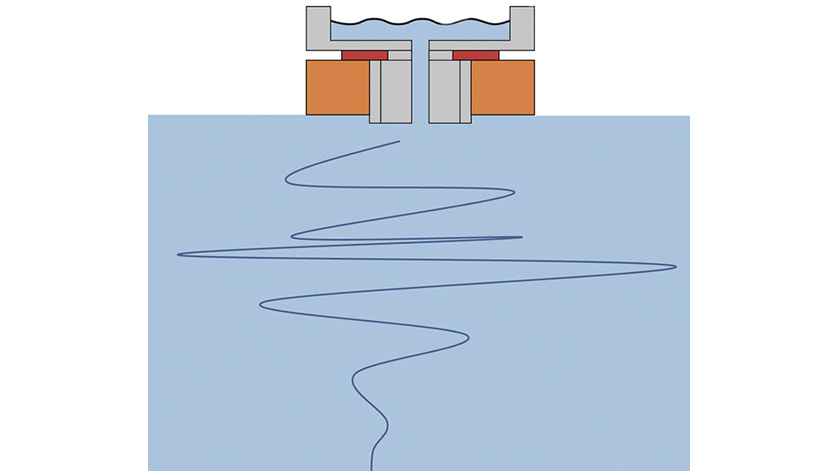
Particularly when measuring the pressure of fluids in piping systems, pressure sensors are consistently destroyed by overpressure. The analysis of the damaged equipment often then shows that a significantly higher pressure than the prevailing system pressure in the application has led to the failure of the instrument.
The user, who is then informed by the pressure sensor manufacturer about the cause of the failure, can often not explain why a pressure several times higher than the nominal pressure of his system should have caused the failure. Often, these higher pressures are caused by what is known as ‘water hammer’. Water hammer is a pressure surge that occurs in flowing liquids with the opening and, above all, the closing of valves. Since this physical effect first appeared in early water pipes, the name ‘water hammer’ was adopted.
The resulting pressure surges can reach several hundred bar in extreme cases, depending on the pipe diameter and closing speed of the valve. Frequently the water hammer effect is therefore responsible for damage in piping systems, valves and pumps. Typical pressure sensors offer 2 to 4-fold overpressure safety – meaning they can be used with no permanent damage, even with 2 or even 4 times the nominal pressure. In order to be able to withstand pressure surges in liquids, a 300 bar sensor would need to be used in a 3 bar domestic water system so that all extremes could be survived. This would, however, also lead to a corresponding measurement uncertainty. Therefore, many pressure sensor manufacturers offer snubbers. Snubbers basically act like a closing overpressure valve.
Thus, the closing pressure at which the valve spindle is pressed into the case seat by the medium, and therefore closing the connection to the pressure sensor or pressure gauge, is set by means of a spring. Very fast pressure peaks, that can occur with small valve closing speeds, might not be intercepted due to the inertia of the mechanical system in the snubber. Another way to protect pressure sensors and pressure gauges against pressure surges is to narrow the pressure channel to the diaphragm. Thus, a reduction of the pressure channel to less than 1 mm in diameter, moderates rapid and strong pressure peaks and thus protects the sensor from damage.
Should you need any help with choosing a suitable solution for your pressure, temperature or level measurement requirement, please speak to your contact person.


Really helpful✌✌✌